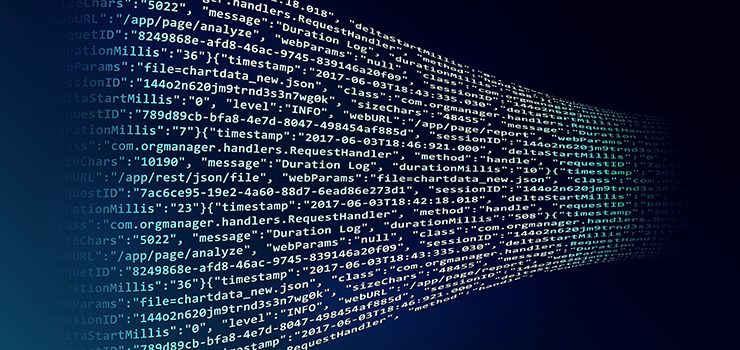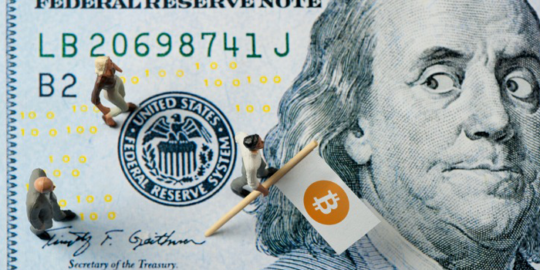If you’ve ever read about cryptos or bitcoin, you’ve probably seen the term “blockchain”—a lot.
In fact, today you’ll hear the term thrown around in discussions on video games, banking, voting, and even COVID-19 contact tracing… but for a number of people, the concept of a blockchain is still a bit muddled.
Many know it’s related to bitcoin, but a better understanding of the blockchain is one of the first steps toward becoming an educated crypto investor.
After all, do you really want to put your hard-earned money into an investment you don’t understand?
A better way to buy
In 2008, the mysterious Satoshi Nakamoto invented the blockchain public transaction ledger as a framework for his new cryptocurrency: bitcoin.
Nakamoto’s goal was to create a decentralized currency and payment system that would eliminate the “middleman,” or the need for a governing authority like the Federal Reserve. Bitcoin and blockchain were his solution to the problem.
With bitcoin, Nakamoto included failsafes to limit currency dilution and devaluation. And with blockchain, he created a transparent transaction ledger that’s nearly impossible to manipulate or alter.
Just like the name implies, a blockchain is essentially a chain of linked data (called “blocks”). But what makes this database different is that each new block of data is cryptographically linked to the block before it (creating the “chain” in blockchain), amounting to a virtually tamper-proof level of security.
Here’s how it works in simpler terms…
Members only
Imagine blockchain as a kind of anonymous social club.
At “Club Blockchain,” anyone can become a member (called “blockheads,” for this example), and the process is always the same…
When a new blockhead joins the club, they’re linked up with the blockhead who last joined the club. Since the club is anonymous, the two members don’t exchange personal information… instead, they agree to a codeword only they can use to verify each other as members.
This process is repeated with each new member, and it ultimately creates a membership chain of blockheads with two codewords per member.
Now in order to verify and maintain the club’s integrity, every change in membership prompts a password check back through the chain… kind of like a weird game of telephone.
If everyone’s password checks out, then club membership is accurate and up-to-date. But if a password is different than it should be, the entire club becomes aware of their compromised member. Through the entire process, control is held by consensus, and every blockhead is aware of any changes.
It’s a somewhat silly example, but real blockchains function in a similar way.
When new data is added to a blockchain, every prior block is aware of the change as it occurs, and the link between blocks is verified and/or updated as needed. And with blockchain in particular, the new data (or any changes) even plays a role in the creation of the encrypted link/codeword between blocks.
Any attempt to retroactively alter data results in an updated codeword that doesn’t fit within the existing blockchain.
Putting it all together
On a very basic level, a blockchain is like a self-auditing ledger of data. Each new entry is linked to the last, prompting the rest of the chain to verify each other and confirm the addition.
A lack of a central administrator or governing authority means updates to the ledger are transparent and occur almost immediately… and it also puts control of the blockchain in the hands of all its users.
Plus, database administration by consensus makes it nearly impossible for a single entity to cheat or monopolize control of the system.
So, the next time you hear about a hot new blockchain idea, pay attention to a few things…
Does the addition of blockchain make sense or add any benefit? Blockchain technology has been beneficial for things like cryptos, security tokens, and banking… but that doesn’t mean it’s an advantage every time you need a database.
If the newest and hottest blockchain tech is in a sector that’s thriving without the technology, it’s often a red flag—especially in industries where a ledger-style database doesn’t make sense, or where a centrally managed database is required.
Until next time,

| Chris Gaarde Contributing Editor, The Token Tracker |
Editor’s note:
Bitcoin and other top crypto assets have been on fire during the COVID crisis… Like gold, many are limited in supply—making them a safe harbor in volatile times.
Since February, Frank’s Crypto Intelligence picks have seen gains of 30%.. 35%… and 45%… with plenty more room to run.
If you’ve been sitting on the sidelines of this sector, here’s why you’re missing out on some of the biggest gains to come…








